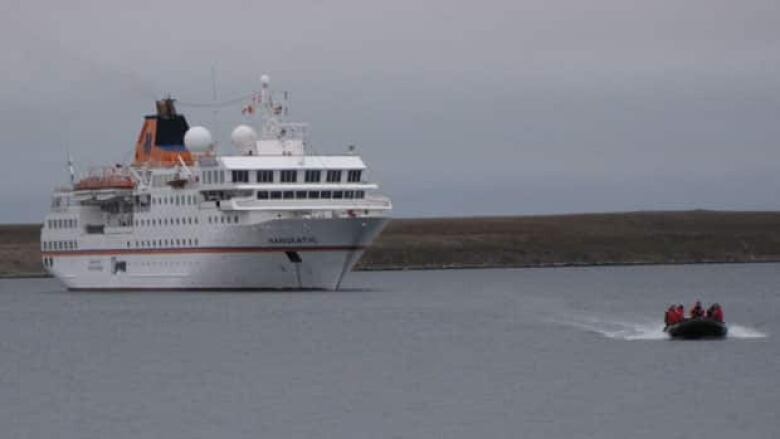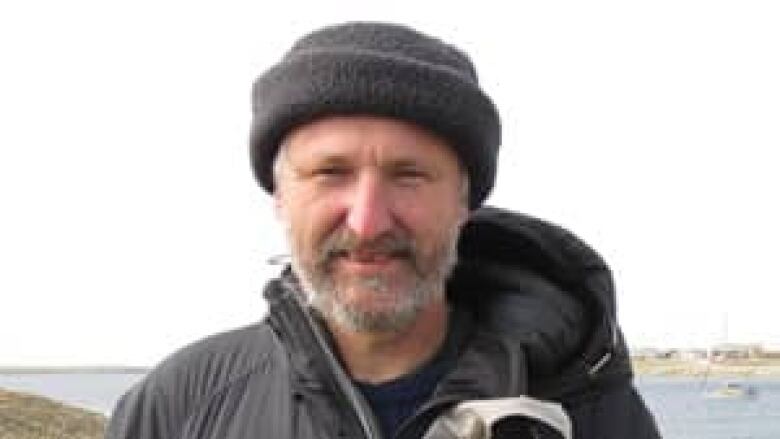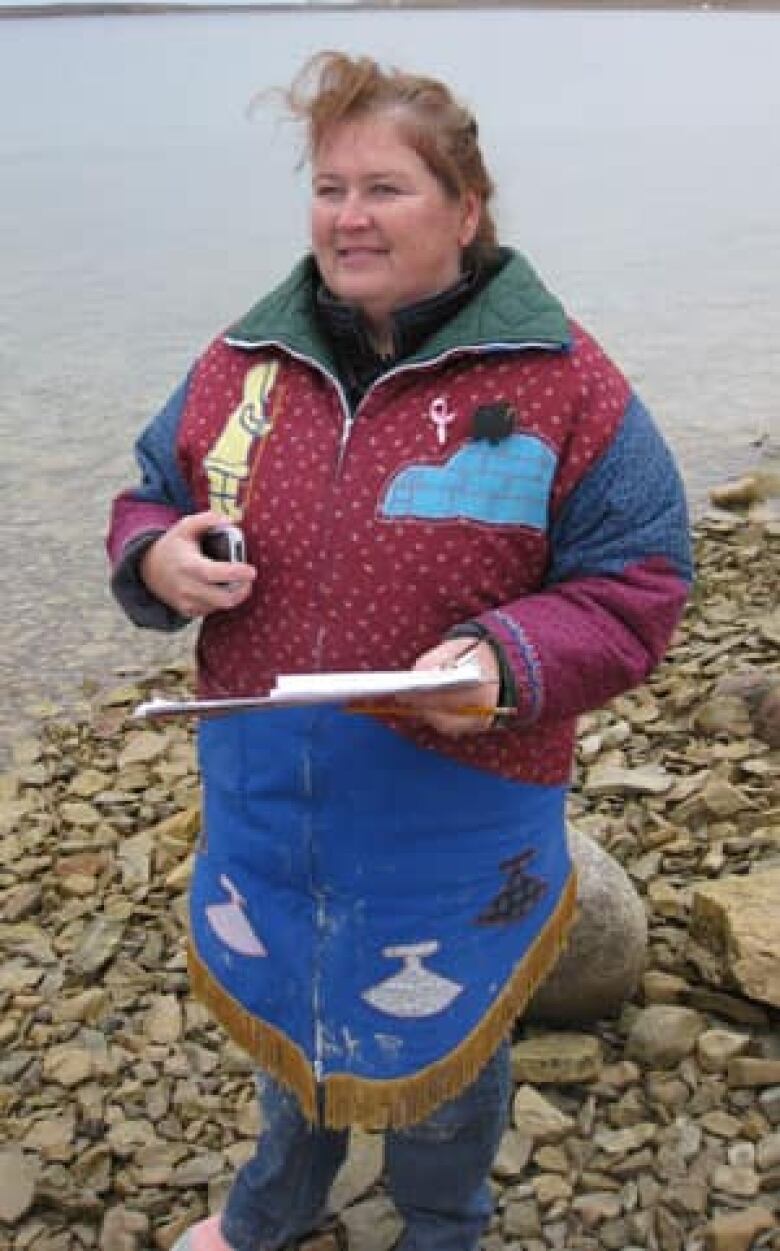Arctic tourism heating up as Northwest Passage melts
'Hundreds of men died trying to do what were doing now'

As the Northwest Passage becomes increasingly ice-free during the summers, Cambridge Bay, Nunavut, has seen a dramatic upswing in tourists arriving by sea.
"It wouldnt be surprising to see six sailboats out in the bay at one time, and we usually have between two to six cruise ships come here every year as well, and the cruise ships have hundreds of tourists," said Cambridge Bays senior administrative officer Steve King.
The first cruise ship successfully crossed the Northwest Passage in 1984, but it wasnt until the 1990s that the ships began to pass through every year. Sailing the Northwest Passage in private yachts took off in the 2000s.
[IMAGEGALLERY galleryid=2932 size=small]
For the last five years, the passage has been nearly ice-free in the late summer, according to Environment Canada data.
Vicki Aitaok, Cambridge Bays cruise ship co-ordinator, said the communitys visitors' centre logged a 30 per cent increase in numbers of tourists over the past five years.
According to a visitors exit survey commissioned by Nunavuts Department of Economic Development and Transportation, close to 3,000 cruise ship passengers visited the territory in 2008, making up 12 per cent of total visitors. In 2011, 16 sailboats or yachts made their way into Northwest Passage.
Those who travel the passage say they feel the history of the place, as 19th Century explorers travelled the same waters.
"I like it when people say 'oh it's easy now what youre doing because all the ice is gone,'" said Frank Rothwell, skipper of the Upchuck, a sailboat from England stopping over in Cambridge Bay on its way through the Passage. "And I say 'hundreds of men died trying to do what were doing now.'"
Searching for Franklin
The Canadian government announced Thursday that it is launching a search for the two ships involved in Sir John Franklin's doomed 1845 quest for the Northwest Passage, the very passage where tourists are now venturing. For full coverage of the Franklin search, visitcbcnews.ca/franklin.
Modern technology may add some security and comfort the Upchuck is equipped with a satellite phone and heatbuta long voyage in a remote arearequires being self-sufficient in food, fuel, tools and parts.
Long weeks spent in communities like Cambridge Bay waiting for ice to clear also fosters camaraderie among the sailors of international origin.
"At the moment, weve got quite a few tourists in and we were even joking at breakfast this morning that we can find a quieter place at home and weve come all the way to the Arctic and its so busy," said Huw Fernie, a member of the Upchucks crew.
Charts not reliable
Navigating the Northwest Passage is not all smooth sailing. Charts are not as reliable as they are in more travelled waters.
In 2010, the MV Clipper Adventurerran aground on an uncharted rockin the Coronation Gulf on its way to Kugluktuk. Its 118 passengers had to be ferried to shore by a Canadian Coast Guard icebreaker, which was luckily not too far away.
Similar incidents happened in the region in 1996 and in 2007.
Rescue is often not close by, either. Search and rescue aircraft are all located thousands of kilometres away in British Columbia, Nova Scotia and Ontario.

Peter Garden, a tourist from New Zealand who is sailing the passage with his family, said he is used to charts not being accurate in places such as the South Pacific, where they can be off by up to two miles.
"Its nothing like that here but the errors are significant they can be a quarter of a mile and if youre navigating in a narrow passage with rocks around you have to always assume that there can be unknown dangers," said Garden.
"The charts tend to be accurate, theyre just not aligned correctly to where they should be. They need to be moved up or down, east or west, a little bit."
Rothwell said sailing the Arctic is not for amateurs.
"Anybody thats coming up here in a yacht is not a first time sailor," he said.
Some towns not well-equipped for tourists
Theres also a lack of amenities for visitors in a territory where tourism is still a fledgling industry.
The 2008 visitors exit survey found that more than half of Nunavuts yearly visitors were travelling for business, not leisure. The high cost of travel in the North continues to be a common complaint. In the survey, only 41 per cent of visitors to Nunavut said they felt their trip was good value for the money spent.
The sailors all agreed Cambridge Bay is well equipped for tourists compared to some of the places they had been in the North.
"[In Tuktoyaktuk, N.W.T.,] we found it impossible to find an internet connection, certainly nowhere to do your laundry," said Garden.
"They invited us to the community hall where they had drum dancing and so on and we had a great time there. But if you flew in as a tourist expecting an amazing sort of northern experience you might find it difficult to find things to occupy yourself."
Taking advantage of growing interest in the North

Aitaok said when the cruise ships first started arriving in Cambridge Bay, she noticed the visitors "sort of wandered around town in these red coats".
Now the hamlet offers cruise companies an extensive cultural program and paid guides take the visitors around town.
"[They] take groups of 10 to 15 people and they talk about everything, from the water and sewage truck delivery, to the gravel roads, to why the houses are on stilts, to the Bay Maud out in the bay and the history of the LORAN tower," she said, referring to the towns Long Range Navigation tower that has been there since the late 1940s.
If Cambridge Bay were to accommodate more visitors, Aitaok and King say infrastructure improvements are needed. King points to a need for more hotels and restaurants, and Aitaok said a longer, paved runway would allow larger planes to land, lowering costs for passengers and freight.
"The cost to get here is probably the biggest barrier," said Aitaok. "Any way that that could be reduced we would see certainly a lot more people coming."
"Everything that we do, that we take for granted here in our day-to-day, is seen by so many other people as just wow, unusual. People in the community are starting to recognize that, and are very proud of it."












_(720p).jpg)


 OFFICIAL HD MUSIC VIDEO.jpg)
.jpg)



























































































